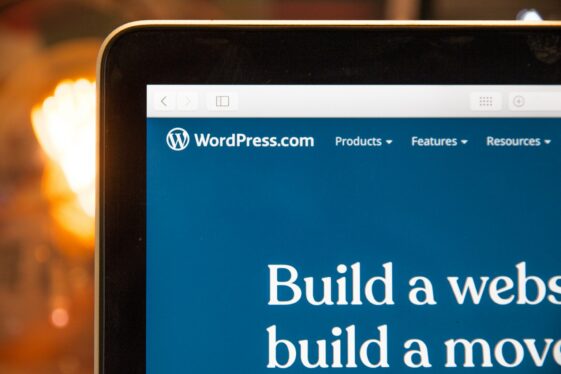7 Reasons Why Drupal is Great for Content-Heavy Websites

Many of our strategists and technology experts believe WordPress will take over the open source CMS market. However, there are still those who believe in Drupal as a viable CMS options. In exploring the benefits of a CMS, content-heavy websites are usually best supported by Drupal.
For those who write and manage content on the front end of a website, the details of creating a site may not always be at the forefront of their concerns. When creating a great site, it just needs to work. Drupal is the perfect solution. Here are a few top-level reasons why Drupal is a great platform for a content-heavy websites.
-
Easy Content Management Interface
One simple word: WYSIWYG. Actually, it’s an acronym for several words: What You See Is What You Get. The WYSIWYG editor seamlessly allows the content manager to write articles, blog posts, and webpages much in the same way you would write and edit in a Word doc. Boldface or italic type, hyperlinks, and various fonts, headings, and standard styles are available at the click of a button to ensure that your whole site has visual and stylistic continuity. The process is simple: type, preview, and publish. This frees you up to focus on what is most important to any content manager—the content! To see all the available modules, click here for Drupal 7 or click here for Drupal 8.
2. Leveraging a Lego-Like Framework
The Drupal framework can be thought of like a set of Lego® blocks that can be assembled to build anything you want, exactly the way you want to build it. Drupal has modules for a multitude of website features, including ShareThis for social media, Image Effects for photo editing, calendar modules, CAPTCHA, and Google Analytics and metatag modules. They also have vast numbers of navigation and menu modules. The availability of these plug-and-play features means that your web designer can create your site in less time and for less money. You can minimize the amount of custom code required to build your site to your exact specs while making it easier to update in the future. There are also plug-and-play modules for mobile accessibility. With 77% of Americans now owning smartphones, a mobile accessible website is absolutely crucial for success.
3. Flexibility
Even with these building blocks, Drupal remains highly flexible, allowing for integrations or custom code to be added as needed. If your site requires complex integrations with SalesForce, for example, there are proven modules readily available to assist with the integration. A content heavy site will need a great search function as well. Drupal allows you to add in an Apache Solr search bar, which can index results on a huge site. It’s user-friendly and fault tolerant, which is why it’s the preferred search mechanism for major sites across the globe like Ebay, Netflix, and Instagram.
4. Customizable Design
Among the biggest considerations in building a new site or updating your current site is determining how you want that website to look and feel. The Panels module in Drupal allows you to create customized layouts for multiple uses. It is essentially a drag-and-drop content manager that lets you visually design a layout and place content within that layout. Each page can be customized to work with the content while maintaining the visual and stylistic continuity that is expected on a professional site. Want to learn more about how flexible content structures can help create a visually engaging site? See our work with Learning Without Tears.
5. Database Capability
Drupal is widely used for its ability to accommodate and organize large databases of publications, white papers, articles, or any other resources you may want to share with your stakeholders. The Drupal database allows for a variety of sorting and organizing features through its easy-to-implement module system without having to create a huge amount of custom code to build your perfect library. There have even been strong suggestions that Drupal’s database capability is a leading reason the tech-savvy Obama White House pushed to transition government sites to Drupal.
6. A Tried-and-True Open Source Platform
For the non-technical content managers and business leaders out there, open source means that all of the source code for the program is freely available to be used, modified, and distributed as needed. Many large organizations, including many agencies of the US Government and Fortune 500 companies, are now using the Drupal platform; this means millions of users have tested the various sites and plugins. When something doesn’t work or could benefit from an update, the sheer number of Drupal users on the open source platform have helped ensure timely updates, changes, and evolutions to suit the changing needs of users and website owners.
7. Security
The strength of Drupal’s security capabilities is one of the strongest benefits of the CMS. Drupal security has proven to be much safer than WordPress. Patches and updates are regularly created and pushed out to Drupal sites for install, with a prominent banner that informs users of update capabilities. If you have a content heavy site, you don’t want to risk a long and costly fix or even a rebuild after a hack. Your IT team can quickly and easily implement the necessary changes to keep the site secure with Drupal.
While the battle between Drupal and WordPress is guaranteed to be a longstanding one, the benefits of choosing Drupal for content-heavy websites are undeniable. With immense flexibility, a huge open source community involvement, massive database accommodation capabilities, and impressive security measures, Drupal is the powerful choice for your content-based website.
Want to know how our development team uses Drupal to help content-based sites like USIP, Folger Shakespeare Library, or Learning Without Tears? Check out our work or send us an email at [email protected] to get started on building your Drupal powered site today!



